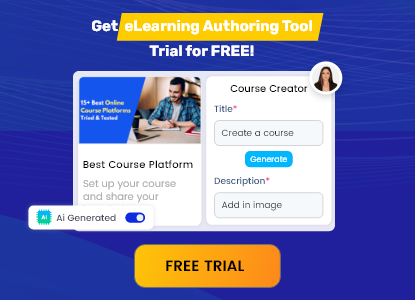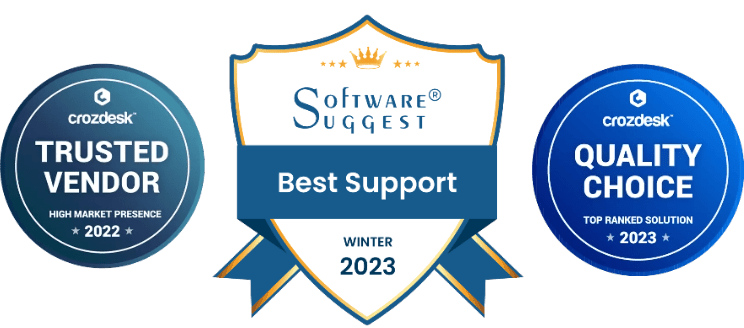In today’s interconnected world, designing eLearning content for international audiences is more important than ever. One of the key challenges in creating globally accessible courses is ensuring that the course content is not only translated accurately but also adapted to the cultural and technical needs of diverse users. In this blog, we explore authoring tool features that support international audiences, diving into the critical aspects every eLearning designer should consider when choosing the right tools. We’ll also highlight some essential features of authoring tools that enable smooth localization, collaboration, and design adaptability.
The Importance of Global-Ready eLearning
As eLearning continues to grow, organizations are increasingly looking to deliver courses that are accessible and engaging to learners worldwide. However, creating courses for a global audience involves much more than simple translation. The content, design, and technical aspects need to be fine-tuned to meet the varied needs of learners from different linguistic and cultural backgrounds.
An effective eLearning authoring tool can help streamline the localization process, reduce errors, and enhance learner engagement by providing robust support for multiple languages and cultural contexts. Let’s dive into the six essential authoring tool features that can empower your global eLearning strategy.
1. Language Selection
Building One Course for Many Languages
Advantages of In-Course Language Management
- Efficiency: Update content once rather than multiple times for each language version.
- Consistency: Maintain a uniform design and message across all languages.
- Ease of Use: Learners can easily navigate back to the language selection menu if needed.
2. Display Conditions
Tailoring Content for Specific Audiences
Practical Applications of Display Conditions
- Dynamic Content: Show or hide images and text based on language selection.
- Navigation Customization: Adapt menus and links to guide users through language-specific paths.
- Enhanced User Experience: Prevent confusion by only displaying content relevant to the user’s locale.
3. Support for Right-to-Left Language and Design
Adapting to Diverse Reading Directions
Key Considerations for RTL Support
- Text Alignment: Automatically adjust text alignment and justification.
- Layout Adaptation: Shift design elements such as menus, buttons, and images to mirror the reading direction.
- User Experience: Ensure that all interactive elements behave correctly in an RTL context.
4. Collaboration Tools
Enhancing Global Teamwork
Creating globally relevant eLearning content is rarely a solo endeavor. Collaboration tools within an authoring platform enable teams spread across different geographies to work together seamlessly. These tools allow you to assign roles such as administrators, editors, and reviewers, ensuring that everyone involved in the content creation process can contribute effectively.
Benefits of Integrated Collaboration
- Role Management: Assign specific roles to team members to streamline the content creation process.
- Direct Editing: Allow translators and editors to work within the same environment.
- Quality Assurance: Enable reviewers to flag potential localization issues immediately.
5. XLIFF Import and Export
Simplifying the Translation Process
Streamlined Translation Workflow
- Efficiency: Quickly export and import text without manual intervention.
- Accuracy: Reduce errors by maintaining consistent formatting.
- Scalability: Easily manage translations for multiple languages at once.
6. Deliver via the Cloud
Maximizing Accessibility and Collaboration
In a global environment, ensuring that every team member has access to the most recent version of a course is paramount. Cloud-based authoring tools offer a significant advantage by hosting courses and resources on remote servers, which are accessible from anywhere in the world. This eliminates the need for managing local installations and licenses, making it easier for teams to collaborate in real-time.
Streamlined Translation Workflow
- Accessibility: Access courses and resources from any location.
- Collaboration: Work in a unified environment without installation hassles.
- Reliability: Enjoy fast, secure, and globally distributed content delivery.
Beyond the Basics: Additional Global eLearning Considerations
While the six authoring tool features discussed above are fundamental, there are additional considerations when creating culturally-aware eLearning content. Effective localization goes beyond language translation—it requires attention to cultural nuances, visual design, and user interaction patterns.
Cultural Adaptation and User Experience
The Role of User Feedback
Embracing a Holistic Approach
Combining technical features of authoring tools with a nuanced understanding of cultural differences will ultimately lead to more engaging and effective eLearning experiences. Whether you are updating existing courses or developing new content, integrating these features into your workflow is a strategic investment in the success of your global eLearning initiatives.
Conclusion
Investing in the right authoring tools not only streamlines the content creation process but also ensures that your eLearning courses are truly global. With these features at your disposal, you can focus on delivering high-quality, culturally-aware content that engages learners across the globe. Remember, the future of eLearning is global, and the right tools can help you stay ahead of the curve.






















